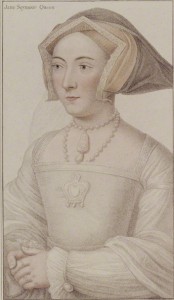 On 7th June 1536, less than three weeks after the execution of Henry VIII’s second wife, Queen Anne Boleyn, his new marriage was celebrated with a water pageant or procession along the River Thames.
On 7th June 1536, less than three weeks after the execution of Henry VIII’s second wife, Queen Anne Boleyn, his new marriage was celebrated with a water pageant or procession along the River Thames.
This river pageant from Greenwich to Whitehall (formerly York Place) was in honour of Queen Jane Seymour, daughter of Sir John Seymour of Wulfhall. Henry had taken her as his wife on 30th May 1536.
These celebrations took the form of a water pageant, or procession, along the Thames, from Greenwich to Whitehall (York Place).
Chronicler Charles Wriothesley recorded this event:
“Also, the 7th day of June, being Wednesday in Whitsun week, the King and the Queen went from Greenwich to York Place, at Westminster, by water, his lords going in barges before him, every lord in his own barge, and the King and the Queen in a barge together, following after the lords’ barges, with his guard following him in a great barge; and as he passed by the ships in the Thames every ship shot guns, and at Radcliffe the Emperor’s ambassador stood in a tent with a banner of the Emperor’s arms set in the top of his tent and diverse banners about the same, he himself being in a rich gown of purple satin, with diverse gentlemen standing about him with gowns and coats of velvet; and when the Beach King’s [the Master of Ceremonies?] barge came by him, he sent two boats of his servants to row about the King’s barge, one of them were his trumpeters, and another with shalms and sackbuts, and so made a great reverence to the King and Queen as they came by him, and then he let shot a forty great guns, and as the King came against the Tower of London there was shot above four hundred pieces of ordinance, and all the tower walls towards the water side were set with great streamers and banners; and so the King passed through London Bridge, with his trumpets blowing before him, and shalms, sackbuts, and drummers playing also in barges going before him, which was a goodly sight to behold.”
Also on this day in history, sixteen years earlier on 7th June 1520, a historic meeting between King Henry VIII and King Francis I began. It was known as the Field of Cloth of Gold. Here is my video on it: